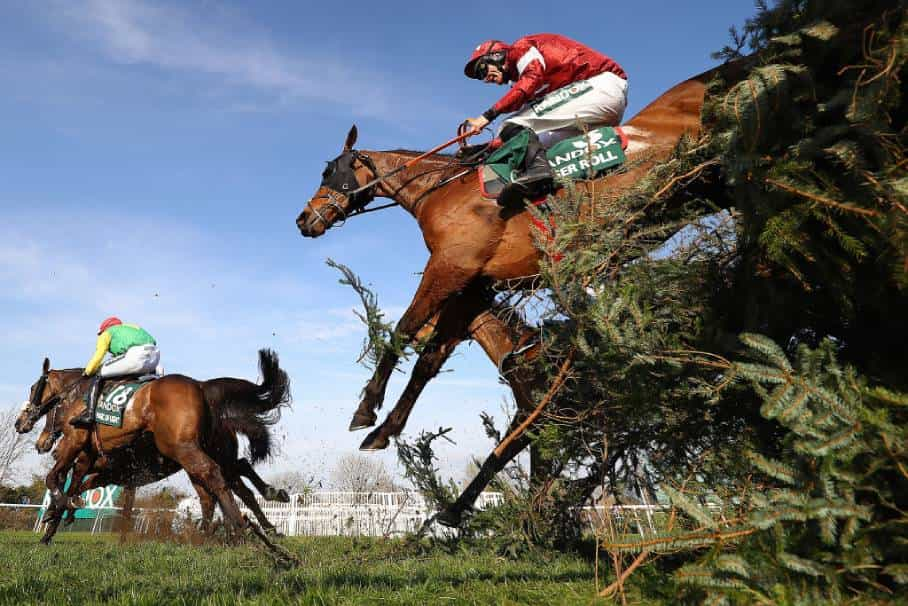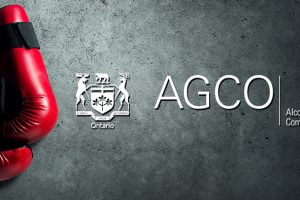Grand National Stalwarts That Earned a Place in History
This weekend Noble Yeats will attempt to emulate Tiger Roll (2018-2019), Red Rum (1973-1974), and Reynoldstown (1935-1936) by winning the Grand National for a second successive year. Grand National betting sites believe he has a strong chance and offer just 8/1 about the defending champion retaining his title.
Aged eight, Noble Yeats should be improving and can be expected to put forward a strong defense of his crown as is a favourite amongst the biggest sports betting markets. And, as five 11-year-olds amongst the 2023 Grand National field testify, it is possible the Irish-trained horse could race in many more Grand Nationals during the years ahead. Interestingly, Reynoldstown, Red Rum, and Tiger Roll were all eight when running in and winning their first Nationals.
Racing in the Grand National for a third successive year, Any Second Now is one of the 11-year-olds in this year’s National field. The JP McManus-owned horse improved on his 2021 third-placed run with a second-placed effort – as the betting favorite – 12 months ago.
Six Grand National Favorites That Have a Place in History
In 2023, horse racing betting sites have the Irish gelding placed towards the head of the Grand National betting once again. Can he make it third time lucky? Will he contest the National for a fourth time in 2024? Could Any Second Now build up a sequence of placed Grand National results and join our list (below) of Grand National greats?
1: Manifesto 1895-1904
Manifesto, one of the most famous athletes in horse racing history, made a remarkable eight appearances in the Grand National. In 1896, after he had fallen at the first fence in that year’s National, few would have predicted what the future held for the then eight-year-old. Twelve months earlier, he had finished fourth in the National But, in a classic case of third time lucky, he took the marathon event in 1897.
A repeat became impossible in 1898 after a stable boy left Manifesto’s stable door open, and the horse escaped. Although he was quickly captured, disaster was only narrowly averted, and Manifesto badly bruised a fetlock while jumping a gate. The injury meant he had to be scratched from the contest.
Carrying a stone more than any other horse, Manifesto won the Grand National again in 1899 when shouldering a record 12-stone seven-pounds to victory. More weight was to follow. In 1900 he carried an eye-watering 12-stone 13-pounds when finishing third.
Not entered in 1901, the hugely popular horse finished third in the 1902 Grand National – under Lester Piggott’s grandfather, Ernest Piggott – and third again in 1903. In 1904, Manifesto finished eighth and last of the horses that completed the course. Aged 16, he was twice the age of every horse that finished ahead of him.
After his retirement and death, Manifesto’s skeleton was donated to the University of Liverpool’s Vet School; it is still exhibited today. In 2009 Aintree Racecourse introduced the Grade-2 Manifesto Novices’ Chase to be raced annually in his honor.
2: Red Rum 1973-1977
It could be argued Red Rum still does not get the recognition his Grand National exploits deserve. Most race fans know the former flat-racer won three Grand Nationals, but it is often overlooked that he also finished second in the race on his two other attempts.
In both 1975 and 1976, Red Rum carried top weight around the four-mile four-furlong course. He conceded 11 pounds to dual Gold Cup winner L’Escargot in 1975 and 12 pounds to Rag Trade in 1976. ‘Rummy’ was 12 when he won his third National, carrying 11-stone 8-pound as top weight once again.
3: West Tip 1985-1990
Like Red Rum, West Tip completed five Grand Nationals. However, he contested the race six times. Falling at his second attempt at Becher’s Brook when in contention in the 1985 Grand National, West Tip gained compensation 12 months later.
West Tip winning the 1986 Grand National. He ran in the race six times and was placed on four occasions pic.twitter.com/E2w0aCNHPM
— Sports & Betting History by BestBettingSites (@CDCHistory) October 21, 2021
Returning in 1987, West Tip carried 11-stone seven-pounds into the fourth spot. He was fourth again, carrying the same weight, in 1988. Despite advancing years, West Tip finished second in 1989 – beaten just half-a-length by Little Polveir who was receiving eight pounds from his rival – and returned as a 13-year-old to finish tenth in 1990.
4: Corbiere 1983-1987
In 1983 Corbiere famously made Jenny Pitman the first female trainer of a Grand National winner. Aged eight, it was Corbiere’s first attempt at the National. But he ran in the following four Grand Nationals.
Carrying 11-stone four-pounds to victory in 1983 meant Corbiere was allotted 12-stone and top-weight in 1984. Nevertheless, he finished an admirable third and he claimed third again in 1985 when carrying top weight for a second time.
Remarkably, Corbiere wore the No. 1 (top-weight) saddle cloth once more in 1986 when he fell at the fourth fence. His final curtain call was in the 1987 Grand National where Corbiere’s 12-year-old legs carried him into twelfth.
5: Spanish Steps 1973-1976
Spanish Steps never won a Grand National, but it could have been so different if he were born in a different era. He did win the 1968 Tote Novice Chase at the Cheltenham Festival and the 1969 Hennessey Gold Cup, Benson & Hedges Gold Cup, and S.G.B. Chase. He was also placed in a King George and Cheltenham Gold Cup during a fine career, but National glory eluded him.
Fourth, carrying 11-stone 13-pounds and giving Red Rum 22-pound in the unforgettable 1973 Grand National, Spanish Steps was placed again in 1974 when carrying 11-stone nine-pounds (behind Red Rum and L’Escargot). He finished third in behind National legends L’Escargot and Red Rum again in 1975.
Remarkably Spanish Steps was only keeping up a family tradition. His dam, Tiberetta, had finished second, third, and fourth in the 1957, 1958, and 1959 Grand Nationals. Those results make her one of the most successful mares in the history of the race.
6: The Pilgarlic 1977-1980
Not a racing legend, never asked to carry a big weight, and more of a plodder than a racer, The Pilgarlic was a Grand National stalwart during the late 1970s. He ran up an admirable sequence of Grand National results over four years.
It all started in 1977 when nine-year-old The Pilgarlic finished fourth, at 40/1 odds, in Red Rum’s memorable final National. He finished fifth at odds of 33/1 a year later and proceeded to finish fourth again in the 1979 Grand National. The Pilgarlic signed off with a personal-best third spot in 1980 when he was aged-12. He once again raced as a dismissed 33/1 outsider.




